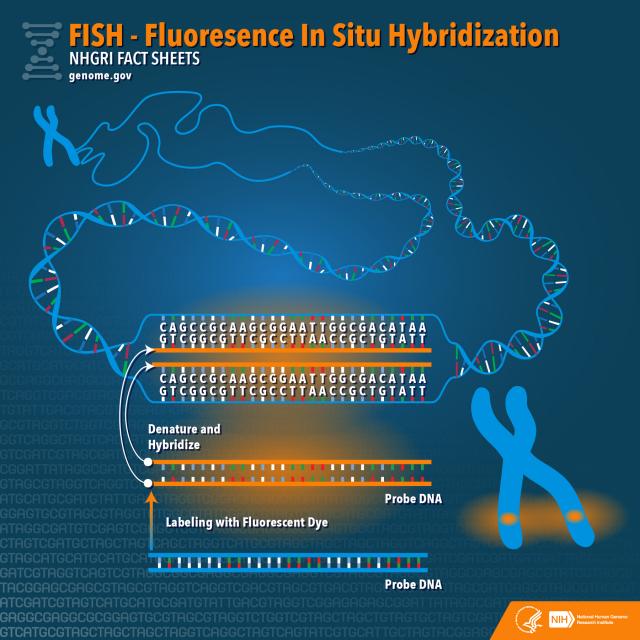Fluorescence In Situ Hybridization from NHGRI
This is an image of fluorescence in situ hybridization from National Human Genome Research Institute (NHGRI). Fluorescence in situ hybridization (FISH) provides researchers with a way to visualize and map the genetic material in an individual's cells, including specifc genes or portions of genes. This is important for understanding a variety of chromosomal abnormalities and other genetic mutations. Unlike most other techniques used to study chromosomes, FISH does not have to be performed on cells that are actively dividing. This makes it a very versatile procedure. Credit: Darryl Leja and Ernesto del Aguila, NHGRI

Source: Credit: Darryl Leja and Ernesto del Aguila, NHGRI.
https://www.genome.gov/
https://www.genome.gov/
License: Public Domain. If you are going to redistribute this image online, a hyperlink to the above source page is mandatory.
© 2007–2024 XoaX.net LLC. All rights reserved.
